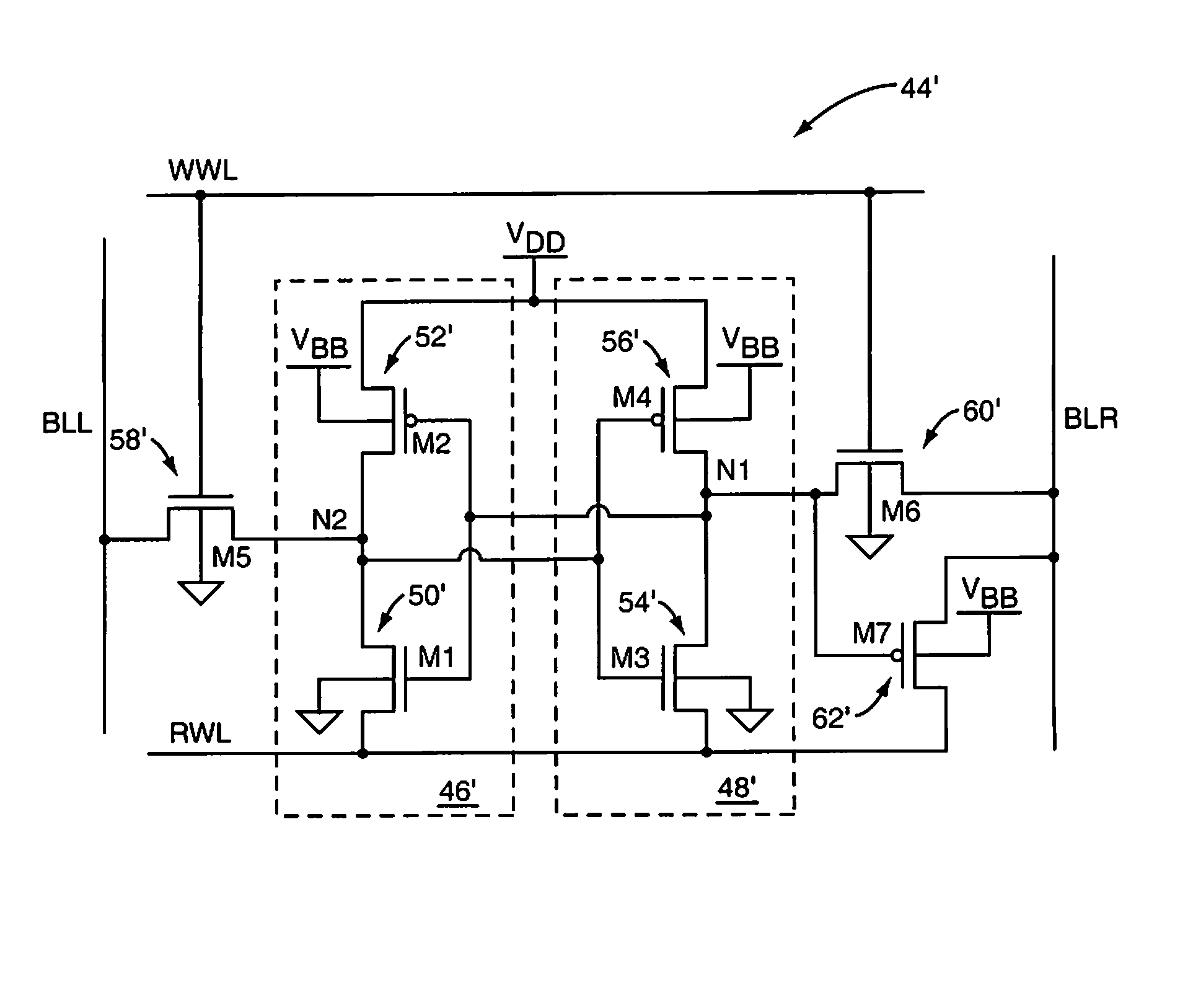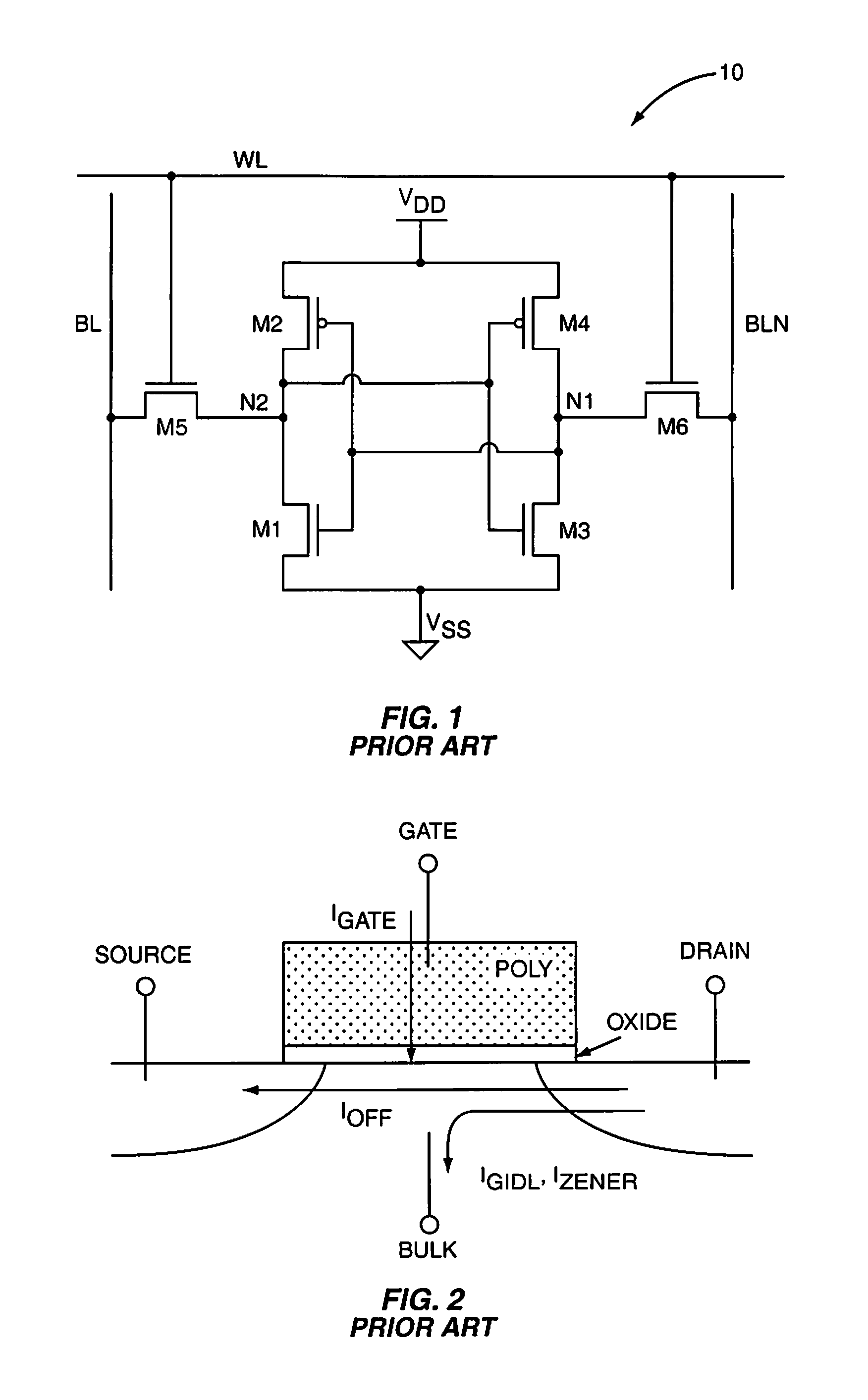SRAM cell with intrinsically high stability and low leakage
a sram cell, intrinsically high stability technology, applied in static storage, information storage, digital storage, etc., can solve the problems of low active power density, complex stability, and ease of design, and achieve low leakage current, reduce leakage current of sram cells, and high stability
- Summary
- Abstract
- Description
- Claims
- Application Information
AI Technical Summary
Benefits of technology
Problems solved by technology
Method used
Image
Examples
Embodiment Construction
[0032]The embodiments set forth below represent the necessary information to enable those skilled in the art to practice the invention and illustrate the best mode of practicing the invention. Upon reading the following description in light of the accompanying drawing figures, those skilled in the art will understand the concepts of the invention and will recognize applications of these concepts not particularly addressed herein. It should be understood that these concepts and applications fall within the scope of the disclosure and the accompanying claims.
[0033]The present invention provides a Leakage Controlled Static Random Access Memory (LCSRAM) cell having high stability and low leakage. FIG. 3 illustrates a system 12 including a six-transistor (6-T) LCSRAM cell 14 according to a first embodiment of the present invention. In general, the 6-T LCSRAM cell 14 includes a pair of cross-coupled inverters 16 and 18 similar to those in a conventional 6-T SRAM cell (see FIG. 1). The inv...
PUM
 Login to View More
Login to View More Abstract
Description
Claims
Application Information
 Login to View More
Login to View More - R&D
- Intellectual Property
- Life Sciences
- Materials
- Tech Scout
- Unparalleled Data Quality
- Higher Quality Content
- 60% Fewer Hallucinations
Browse by: Latest US Patents, China's latest patents, Technical Efficacy Thesaurus, Application Domain, Technology Topic, Popular Technical Reports.
© 2025 PatSnap. All rights reserved.Legal|Privacy policy|Modern Slavery Act Transparency Statement|Sitemap|About US| Contact US: help@patsnap.com



